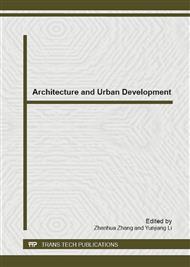p.139
p.144
p.148
p.152
p.156
p.164
p.171
p.176
p.180
The Design and Development of a Child-Friendly Pedestrian Environment in School Zones
Abstract:
The purpose of this study is to develop a design for a user-centric commuting pedestrian (children, parents, and local residents) environment by moving away from administration-centric, safety-only designs via the extension of school zones. A plan is also developed to elevate the design to a practical level. Hence, this study is intended to develop a technique for the pedestrian environment that complies with user behavior characteristics, with a focus on the school-commuting path. Such a technique is anticipated to provide users with options to best utilize their space environment by inducing involvement in various activities. In addition, this study seeks to promote the vitality of the city and local community and enable a high-quality and enriched life for citizens by developing a rich and desirable city culture.
Info:
Periodical:
Pages:
156-163
Citation:
Online since:
November 2012
Authors:
Keywords:
Price:
Сopyright:
© 2012 Trans Tech Publications Ltd. All Rights Reserved
Share:
Citation:


